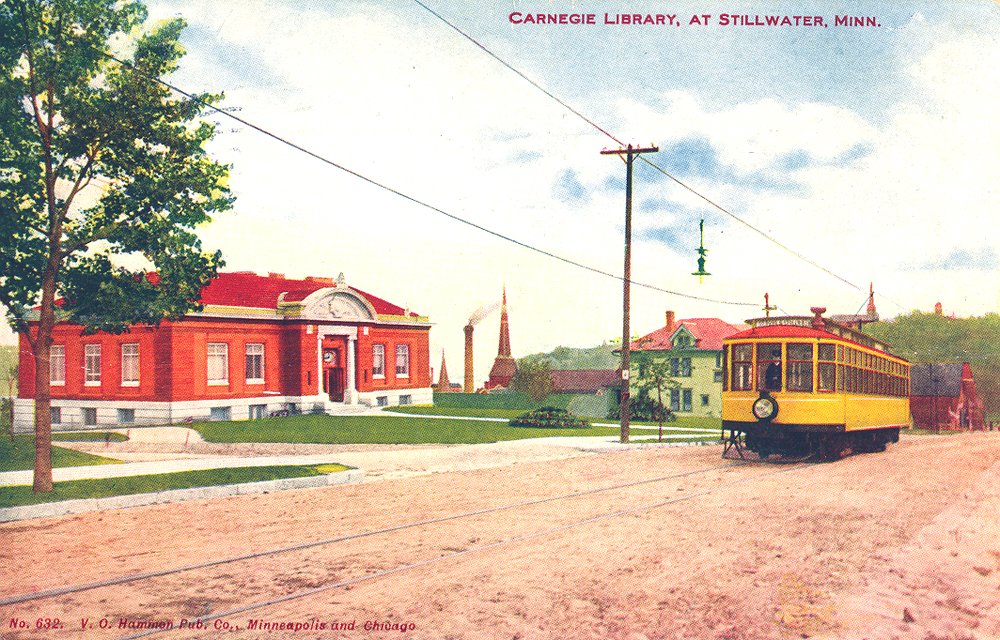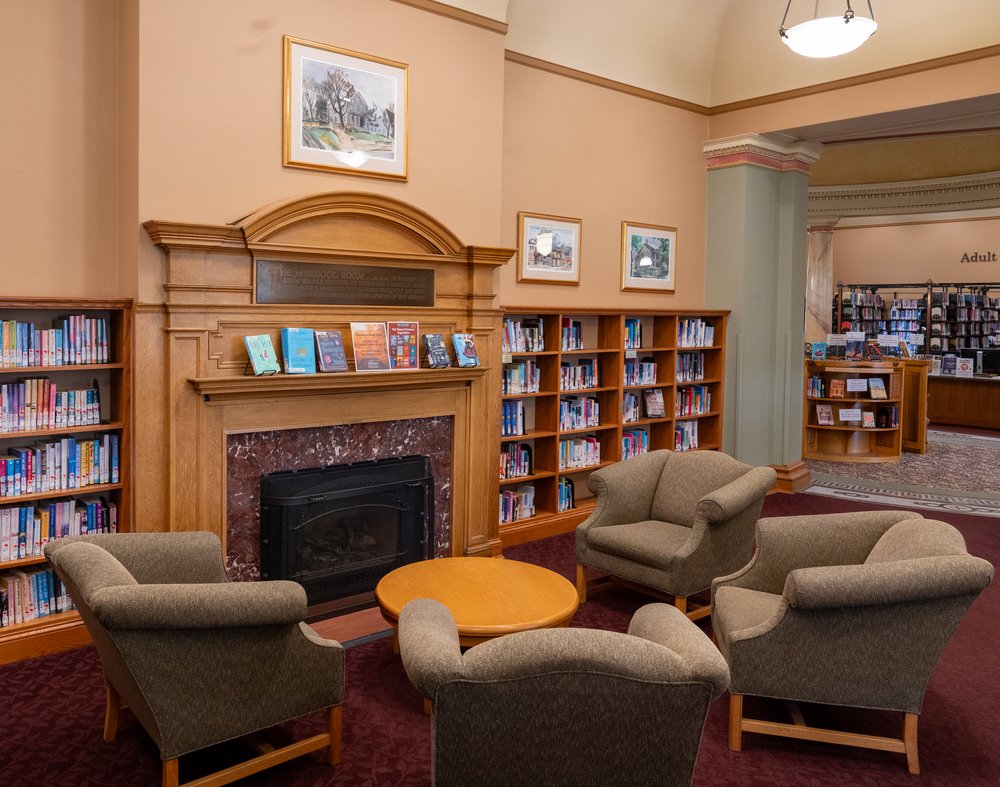Stillwater Public Library
223 4th St. N.
Carnegie Public Library
Stillwater's Carnegie Library represents well both the historical role and the ongoing development of community libraries.
Stillwater citizens established a library in 1897, reflecting community commitment to an educated citizenry. At the same time, industrialist Andrew Carnegie began distributing a vast series of charitable grants intended to improve the well-being of communities. Initially donating, among many other concerns, large sums for community centers that included libraries and recreational facilities, by 1896 Carnegie focused these types of community grants on dedicated library buildings.
Carnegie grants required an application process, and came with conditions. The community was required to provide a building site, and one large enough to accommodate future library expansion. In 1901, Carnegie offered $25,000 to provide funds for the construction of the building if the city provided land for the site and $2,500 annually for the library’s operation. The city agreed to the plan. By 1903, Carnegie donated a total of $27,500 to build the library. Funded at more than twice the typical Carnegie grant amount, Stillwater's library is one of 65 Carnegie libraries found in Minnesota, and one of 1669 constructed nationally.
With Stillwater's downtown already densely built, the idea of a "suitable site" underwent consideration, with the local news reporting:
"The committee appointed some time ago to select a site for Stillwater's new public library met Monday evening, but no selection was made. There are two sites on North Third street, either one of which meets the requirements of the committee and a selection will probably be made in a few days." (St. Paul Daily Globe, September 18, 1901)
Ultimately, the library was built with an address on North Fourth street. When the Minnesota landscape firm Morell and Nichols created a comprehensive plan for Stillwater development in 1918, they recommended that this area be devoted to city functions, and soon an armory and a post office were located nearby. The 1902 building in the Beaux Arts style was typical for an institution devoted to learning, and the interior plan matched closely to that which was soon to be emphasized by James Bertram, who oversaw Carnegie's library developments (although he was no fan of fireplaces, which is a Stillwater library feature).
The era of Carnegie's generosity for library construction grew to a close in about 1916, as an economics professor reported to Carnegie that while library buildings were good for communities, knowledgeable library personnel were increasingly essential. In the meantime, the Stillwater library continued to serve the community. Realizing Carnegie's foresight regarding expansion, library additions were made in 1973 and 2006, with extensive renovations in 1987 and 2006.
— Research by Carmen Tschofen for the City of Stillwater's Heirlooms Home and Landmark Sites Program


